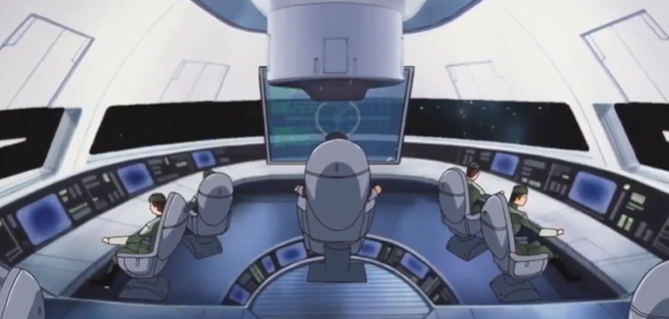On February 5th, C.E. 71, a turning point occurred in the conflict between the Earth Alliance and ZAFT. During an ambush launched by Coordinator forces near the lunar satellite Heliopolis, a chain of events unleashed chaos that revealed not only technological vulnerabilities but also deep human tensions.
The GAT-X105 unit—better known by its tactical designation “Strike”—suffered its first functional defeat since its activation. What had appeared to be an unbeatable technological advantage showed critical flaws when the Phase Shift system deactivated mid-combat. But what unfolded was not simply a matter of engineering—it was a battle of wills, pride, and fear.

The Return of Miguel Aiman
Miguel Aiman, an elite ZAFT pilot, had been presumed dead after a previous encounter with the GAT-X105. His unexpected return was interpreted as a calculated tactical move orchestrated by Rau Le Creuset, the commander of the unit tasked with recovering the stolen GAT prototypes from the Alliance. The goal: to test the actual combat efficacy of the “Strike,” now piloted by a civilian, Kira Yamato, who had no formal military training.
Piloting a modified GINN mobile suit, Miguel launched a lightning assault on the Archangel, the transport and command ship harboring the GAT-X105. The confrontation was brief but lethal. Kira, forced to defend his allies with depleted energy and no support, was quickly overwhelmed. When the Phase Shift system on the Strike deactivated due to energy exhaustion, conventional weaponry began to pierce the armor, exposing a critical weakness previously hidden.
The Vulnerability of the Phase Shift Armor
The Phase Shift Armor system, the Earth Alliance's cutting-edge defense technology, had been touted as impervious to physical projectiles. However, it critically depended on an internal power source with limited autonomy. During prolonged exercises and prior skirmishes, the GAT-X105's core had been overworked, resulting in the system’s failure at the worst possible moment.
With the Phase Shift down, the Strike was left open to severe structural damage. Unaware that the defensive system had failed, Miguel continued his assault with melee weapons and ballistic arms. What was meant to be a battle between machines turned into a struggle for human survival, with Kira, cornered and desperate, forced to improvise in order to repel a far more skilled and experienced enemy.
Command Tensions Onboard
Meanwhile, another battle raged inside the Archangel—a struggle over command and military judgment. Murrue Ramius, acting commander of the Archangel, faced internal criticism for entrusting the ship's defense to a civilian. Her decision was challenged by surviving officers from the destroyed Heliopolis base, especially sub-officer Natarle Badgiruel, who insisted on a stricter, more orthodox approach.
Bridge records reveal intense debate over the ethical limits of using civilians in combat. But faced with a shortage of trained pilots and the imminent threat of a second coordinated attack, Ramius once again assigned the Strike to Kira Yamato. It was a desperate decision that cost her political capital within her own crew, but it also reflected a bitter truth: there was no other viable option.
The Human Factor in War
Kira Yamato, a Coordinator born in the Colonies but raised among Naturals, embodies a painful fracture in the conflict’s narrative. Forced to fight against his own kind—genetically enhanced humans like himself—he entered a devastating internal contradiction. Post-battle medical reports indicated high levels of post-traumatic stress, typical of those forced to kill to protect others, without ever choosing to do so.
The death of Miguel Aiman, confirmed after the collapse of his GINN unit, was particularly significant. Not only because of the tactical talent he represented, but because of how he died—defeated by a teenager who had never set foot in a military academy. This detail caused unrest within ZAFT's high command, where some interpreted the incident as a sign that the war was now reaching civilians in irreversible ways.
ZAFT’s Failed Offensive
Although Miguel managed to breach the Archangel’s defenses and disable the Strike, the operation as a whole failed in its primary objective: the recovery or complete destruction of the GAT-X105. The rapid response of the Archangel’s crew, combined with ZAFT's forced retreat due to coordination issues, prevented a total strike.
Post-battle sensor analysis suggests that Rau Le Creuset allowed Miguel's incursion as a psychological pressure test against the enemy. His lack of reinforcements and his personal decision not to intervene support the theory that he used the pilot as a tool to wear down both enemy morale and his own subordinates.
A Bitter Victory for the Alliance
Despite repelling the attack, the Earth Alliance suffered a moral and strategic setback. The incident exposed that their advanced technology was unsustainable without adequate logistical support and that their dependence on improvised pilots was not viable in the long run.
The GAT-X105 was brought in for emergency maintenance, where it was discovered that the reactor had reached critical instability. Had the Phase Shift not deactivated, an internal explosion might have occurred. This revelation permanently changed how future operations with G-series Mobile Suits were planned.
What happened near Heliopolis that day left a clear lesson: technology alone doesn’t win wars. Troop morale, leadership management, and understanding the enemy are equally crucial factors. Miguel Aiman’s intervention proved that individual courage could still tilt the balance—even against superior weaponry.
But it also showed that modern war demands more and more from those who should never be in the fight. Kira Yamato, for all his heroic actions, represents a generation dragged into war by decisions made in offices far from the battlefield.
This incident marked the beginning of a series of even more brutal and complex encounters. The Archangel, once just a transport vessel, became a symbol of resistance. And the Strike—though damaged—was repaired and enhanced, in the hope that its civilian pilot could continue to sustain a war that was now impossible to avoid.
The questions raised after that battle remain unanswered: how many more like Kira will be forced to fight before peace becomes a real option? And how many more like Miguel must fall before someone finally listens?


